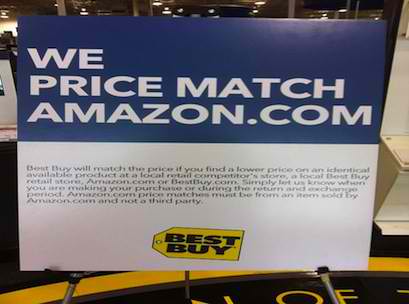All you really need to know about the components of a compelling retail Customer Value Proposition (CVP) is contained in the headline above.
So, if you are short on time, or have a short attention span, you are excused. Go forth and strategise.
But for those who choose to stick around, let me explain in a little more detail.
The principle of the CVP is really pretty simple – “the sum total of benefits which a vendor promises a customer will receive in return for the customer’s associated payment”, according to Professor Wikipedia.
In other words, from the customer’s perspective, a CVP is what I get from you for what I give to you.
And after working with retailers for more than 30 years, I believe there is really only one sum that leads to a strong value proposition. Less (price or savings) + more (some other benefit) = CVP.
The Cambridge Group in Chicago agrees: “from the customer’s perspective, value has two components – the benefit received and the price paid. Value increases as benefits are added at the same price point or as price is reduced for the same benefits”.
But I’m getting all academic on you, so let’s look at some CVPs expressed as simple advertising slogans:
· ‘Lowest prices are just the beginning…’ Bunnings, Australia
· ‘Live well for less’, Sainsbury’s, UK
· ‘More saving, more doing”, Home Depot US
· ‘Expect more. Pay less.’ Target US (which I see has inspired Target Australia to go with ‘Get more, pay less’.
Do you have to be that literal with your CVP as to use it in your tagline?
Well, no, but you do have to reflect the balance of less + more in the totality of your offer and your marketing communications.
Coles, for instance, has ‘Down down’ on the one big red hand, and Curtis Stone spruiking freshness and flavour on the other. (In fact the price part of the equation doesn’t necessarily even have to be low. Apple, for instance, gets away with integrity of price plus quality of design for their CVP. In its case, the ‘less’ part is less discounting.)
One good example of the classic CVP I’ve seen is Best Buy, the electronics retailer in the US.
Hard hit by competing online retailers, Best Buy has successfully developed a price match guarantee that takes the fight to the likes of Amazon.
A poster I saw in store completes the value proposition: “we’ll match their price and throw in a little thing called service”. Less + more.
In a highly entertaining TV commercial, Best Buy expands on the service side of the proposition, resolving with “Thousands of experts ready to help”.
Of course, developing a CVP is only the start of the journey. As a 2006 article in Harvard Business Review observed, “most value propositions make claims of savings and benefits to the customer without backing them up”.
As the originator of the CVP, Ray Kordupleski said in his book, Mastering Customer Value Management, you need to choose value, deliver value, and communicate value. Once again, execution is everything.
Less + more = CVP. Short and sweet. In fact, I could repeat it 10 times in one tweet and still have room for a LOL.
In a world drowning with bloated strategy statements, I figure that less definitely is more.
* Jon Bird is chairman of specialist retail marketing agency IdeaWorks and Octomedia, publisher of Inside Retail and the new Inside Shopper. Email: jon.bird@ideaworks.com.au; Blog: www.newretailblog.com; Twitter: @thetweetailer







